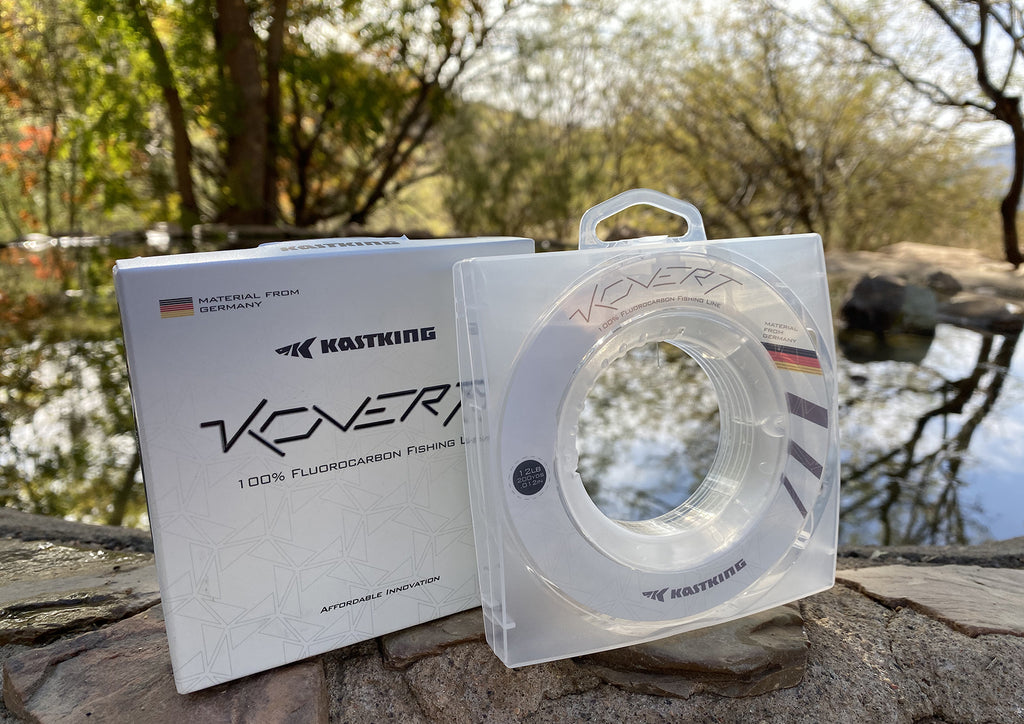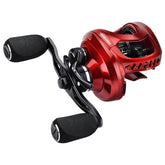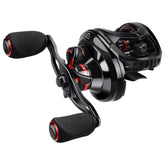
The Pros and Cons of Fluorocarbon Fishing Line
Anglers have many options when selecting a fishing line. Fluorocarbon, braid, monofilament, and copolymer lines all have advantages but none rival fluorocarbon's versatility. This article will explore the advantages, disadvantages, and techniques of fluorocarbon fishing lines.
What is Fluorocarbon
A fluorocarbon fishing line is a single strand of a complex polyvinyl. While the chemical makeup of fluorocarbon is similar to monofilament, the molecules are packed closer together. The closely packed molecules make it a heavier and stronger line compared to monofilament of the same diameter. Because fluorocarbon is a polymer, it won't hold water like a braided line would make it an excellent option for ice fishing.

Advantages of Fluorocarbon
Water Proof
As described above, fluorocarbon won't hold water, so it doesn't freeze. This waterproof nature means the line functions the same dry as it does wet. You know how well it casts, regardless of how many casts you make. The densely packed line also sinks faster than other line types, allowing baits to get to the bottom faster and stay on the bottom.
Visibility
Fluorocarbon is also unique in its visibility. It would be better to say invisibility in water. Floro refracts light at the same range as water does. This means there is no shadow or distortion from the line in the water. For line shy fish and clear water, fluorocarbon is a standout winner.
Abrasion resistance
Fluorocarbon is resistant to abrasion on a level much greater than other lines. The high abrasion resistance makes it a great line for jigs and crankbaits fished in and around dense cover. This abrasion resistance makes for great leader material too.
Sensitivity
Fluorocarbon's tightly packed molecules transfer energy much more efficiently through the line. When fishing a sensitive line, you can feel the lure making contact with the bottom or a soft bite much better than other line types. Because of this sensitivity, there is less stretch in the line. A significant benefit of this is increased hooking power. Unlike monofilament that stretches, all of the power from a hook set is directed to the hook. Having less stretch in a hook set is critical when fishing baits deep or on long casts.
Toughness
Not only is fluorocarbon fishing line abrasion-resistant, holding up to rocks and sunken cover. It is UV resistant. While UV damage may not be at the forefront of many anglers' minds, the sun does damage the monofilament line to the point of eventual failure. Sun damage is not a concern for fluorocarbon. Just another bonus for the fast sinking wondering.
Disadvantages of Fluorocarbon
For all the advantages of fluorocarbon, there are some detractors. While none of these are deal-breakers per se, it's better to be aware, so you can choose the product best for the fishing you are doing.
Memory
Fluorocarbon has more memory than other types of lines. If the reel is over-spooled, your line may look like a stretched-out slinky before the first few casts even it out. This was more of a problem with the early versions of fluorocarbon, and most modern options like the Kast King Kovert won't have this problem when appropriately spooled.
Sink Rate
When fishing bottom or midwater rigs, a sinking line is an advantage. However, in the case of topwater lures, a sinking line like fluorocarbon will reduce the lure's action. To get the most out of your line, match it with the style of fishing you plan on doing the most. For topwater baits, stick to mono or braid.
Knot strength
Fluorocarbon requires the knots to be moistened to properly sinch. Simply wetting the knot with saliva before tightening is all that is needed to ensure a good knot that won't fail. If you are prone to cotton mouth, pond water works fine.
Techniques for fluorocarbon
With the advantages in abrasion resistance, sink rate, and low visibility, fluorocarbon is the standout choice for several well-respected fishing techniques. As mentioned earlier, fishing cover like docks or reefs where an angler can set the hook firmly and quickly fight the fish away from cover makes fluorocarbon ideal. The abrasion resistance of fluorocarbon also makes fishing cover a much more comfortable option. A three to six-foot leader of fluorocarbon is a great option for those using other lines that want to keep from losing a fish in heavy cover.
Because fluorocarbon fishing line has such low visibility, finesse fishing is also easier. Rigs like the Ned rig and drop shot perform well with the sensitivity allowing for very subtle adjustments to the lure with maximum controllability. When fishing live and cut bait, a fluorocarbon leader is a great tool in clear water.
Whether you plan to pitch jigs to bass or troll ballyhoo for sailfish, fluorocarbon is a line that anglers should consider. With the plethora of techniques available, there is a reason every angler should have a spool of the line in their bag. With Kastking’s multitude of diameters available, a line is designed with your fishing style in mind.












